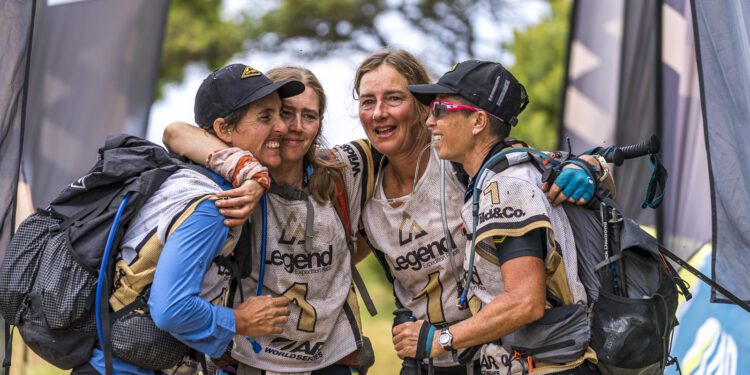I parked my bike, took off my helmet, and grabbed some peanut butter M&M’s, my favorite snack for outdoor adventures.
Sitting in a suburban St. Louis park, I noticed two men emerging from the woods on the hill to my right. Their body language was tense, and their behavior was not pleasant. One of them shouted at the other, “Can you just let me see that map for a second?!”
It was only at the beginning of the Castlewood 8-hour Adventure Race, and already that team was having conflict.
Initially, I planned to write about the business insights gained from adventure racing. Unexpectedly, one of the key lessons I learned was “don’t be a jerk.” Adventure racing, with its mix of canoeing, orienteering, and biking, presents numerous opportunities for negative behaviors to surface.
Business lessons from adventure racing
Race organizers scatter checkpoints throughout the woods or in this case, suburban parks. Competitors rely solely on a map, compass, and their own navigation skills. The team that finds all the points and reaches the finish line first emerges as the winner.
While this may sound straightforward, the frustrations that arise can bring out the worst in us. This is just one of many lessons I have taken from four years of adventure racing and applied to my professional life. Gordon Wright, founder of Outside PR and a former adventure racer, emphasizes the significant overlap between the two domains.
Wright and numerous other adventure racers have accumulated valuable insights on concepts such as charting your own course as opposed to following the crowd, weighing risks against rewards, and functioning as part of a team.
Other than “don’t be a jerk,” here are the top three essential life and business lessons I have learned from adventure racing.
1. Have the right gear, tech, and equipment—and know how to use it
My gear has posed more challenges—both positive and negative, major and minor, serious and comical—this year than in all my previous years combined.
Previously, if I needed to jot something down during a long hike, I had to stop, unpack my notebook from my bag, locate a pen, write it down, then stow away my notebook and pen before resuming hiking. This process proved time-consuming and cumbersome for both myself and my hiking companions.
During an assignment in April, I observed a friend threading a cord through the spirals of his notebook, tying the ends together, and wearing it around his neck like a practical yet quirky necklace.
This simple innovation left me in awe. It dawned on me how much time this clever technique could save me over the years.
I promptly adopted his idea. Despite its seeming simplicity, this “technological advancement” has significantly aided me on various assignments. During the December adventure race, I was able to jot down notes while walking and canoeing without disrupting our pace at all.
2. View obstacles as opportunities
Adventure racing revolves around overcoming challenges, much like running a business. The nature of the challenges may differ, but the constant battle remains the same.
In each race, competitors encounter daunting bike trails, steep hills, and extreme temperatures. Marco Amselem, a member of one of the world’s top pro adventure racing teams, stresses that certain obstacles can be reframed as opportunities. By altering your perspective, you can address these challenges differently.
By viewing obstacles as chances to learn, evolve, and think innovatively, you can approach them with a fresh mindset. Amselem cites the example of dealing with a team member who slows down progress. If seen as a learning opportunity, it can become a positive experience.
“If someone is struggling or unwell, it doesn’t have to be a negative impact on the team,” Amselem explains. “Perhaps it’s a cue for everyone to rest, recuperate, and become stronger and faster.”
3. Make tough decisions on the fly
Similar to any high-pressure situation, adventure racing amplifies both your strengths and weaknesses. When you find yourself lost deep in the woods, you learn a great deal about yourself and your teammates. It’s not about avoiding errors; they’re bound to happen. How you respond to them is what truly matters. Raising your voice demanding to see the map, as witnessed in December, only leads to more conflict and further disorientation.
Furthermore, denying that you’re lost is equally problematic.
Wright recounts two stories that underscore this issue. During a multi-day adventure race in Maine, his team estimated it would take 17 hours to complete a trekking segment.
“After 30 hours, it became glaringly evident that not only were we lost, but our navigator was also at a loss on how to get us back on track,” he recalls. “Navigation, much like leadership in business, relies on mutual trust. My teammates and I supported our navigator until it became apparent they were overwhelmed.”
After 46 hours, Wright and his teammate decided to call for help, disqualifying them from the race. “But it was the correct decision,” he affirms. “We were rescued and likely saved our lives in the process.”
In another instance, the team was mountain biking in the dark, exhausted and disoriented. Their experienced navigator, displaying humility, gathered everyone and suggested taking a brief nap to clear their minds and devise a better route.
This moment of clarity amid chaos helped the team regroup and eventually secure second place in the race.
“It’s clear who I’d prefer to collaborate with,” Wright concludes.


